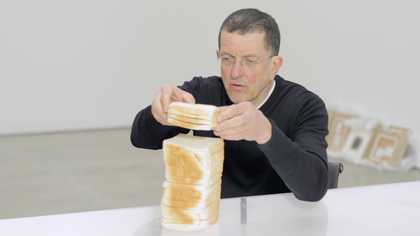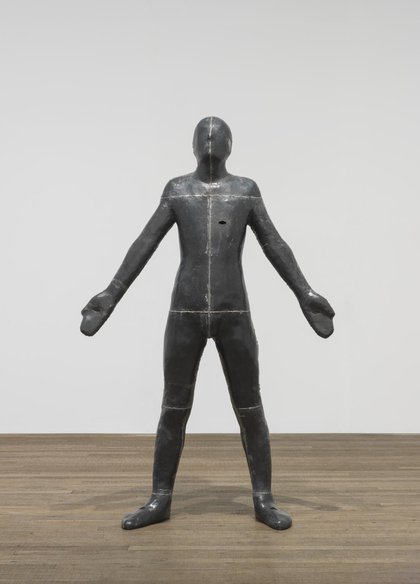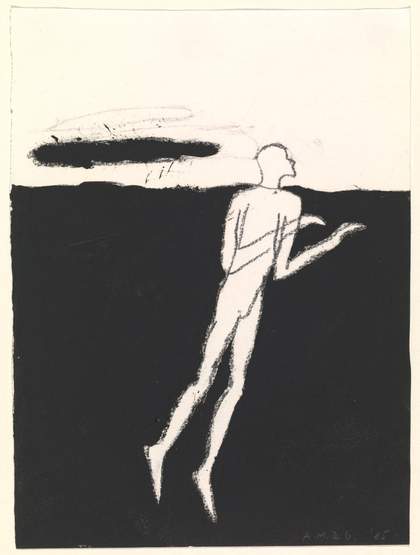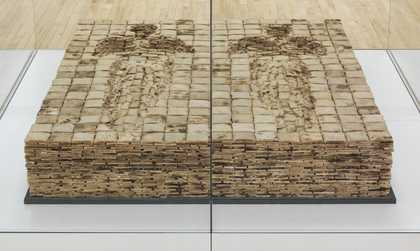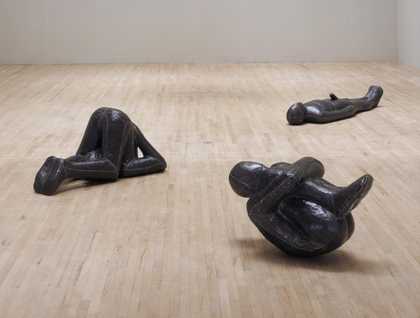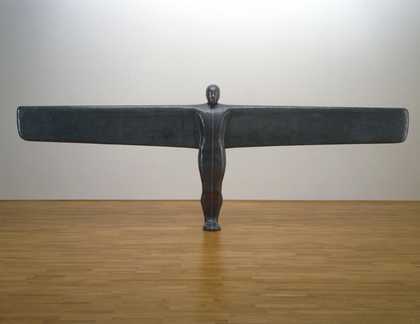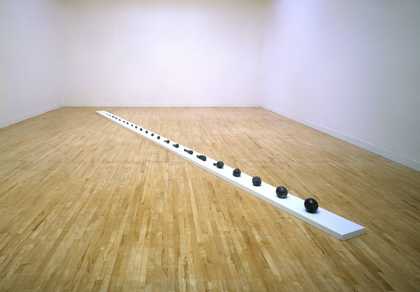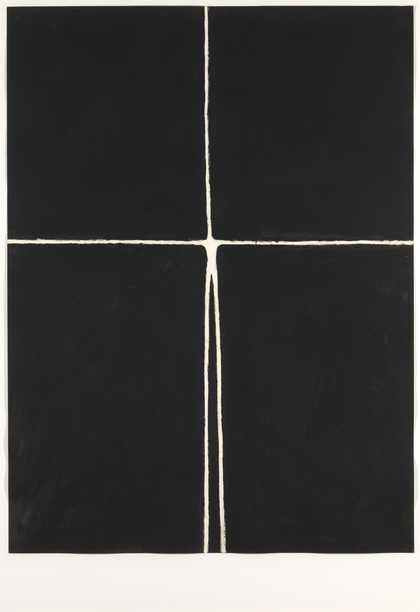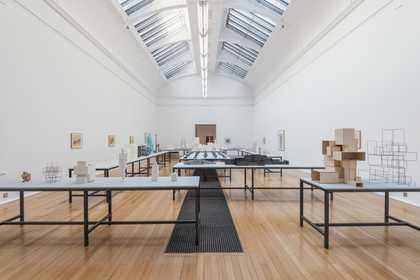Antony Gormley: I looked for two years for somewhere to work in an existing building and it wasn’t possible to find what I needed. I think of it as a factory. It’s a factory basically but we built it with this idiom of it being like a factory. We have got 10,000 square feet of studio space, 14,000 square feet of external space. Each space has its own direct relationship to outside. The big important kind of thing is the relationship between the main studio which is the three central bays and the courtyard. The courtyard has 140 tons of steel underneath it to make it strong enough and the idea in here was really just to have enough height to be able to make things of up to 10 metres high but also see them. On one level this is like a warehouse, on another level it’s like a gallery, on another level it’s just like any old shed really. This is the workshop which is really designed for intensive close work of high engineering capability, but I will show you in here. So this is where all the work begins or all of the bodywork begins and this is a mould taken last week. We are working on a new project. That’s an incremental build. But anyway this is where I stand or sit or do whatever. It’s like a negative in the same way that a negative for a photograph is a negative, so its an indexical register of the place that a body once was. So this is a work that comes in a way from a relationship with that mould but actually it comes from a positive so there is a positive that has been taken out of one of those moulds. That then gave rise to the void inside there. I don’t know if you can see, can you see the void? The idea of an emergent form is very important now. The voided space of the body as a visible emptiness. In a way that was a breakthrough because all of the early work, all of the lead pieces are… they have empty spaces but you can’t see them so they are in a sense failures if you…the ambition of the work is to in a way describe a human space or a human place in space at large because you can’t see it, its an exclusive space and even though I love those early lead works I kind of realise that that idea of, in a way, the continuity of space and place is much better evoked by works like this. My position is somewhat like a conductor of an orchestra in which in a way the score is a given and I have written it, the tambour of the tempo and a lot of the nuances in terms of the way that that score is played is dependent on the sensibility and sensitivity of the assistant. I think that sculpture is collaborative, it always has been, that’s one of its joys actually.

